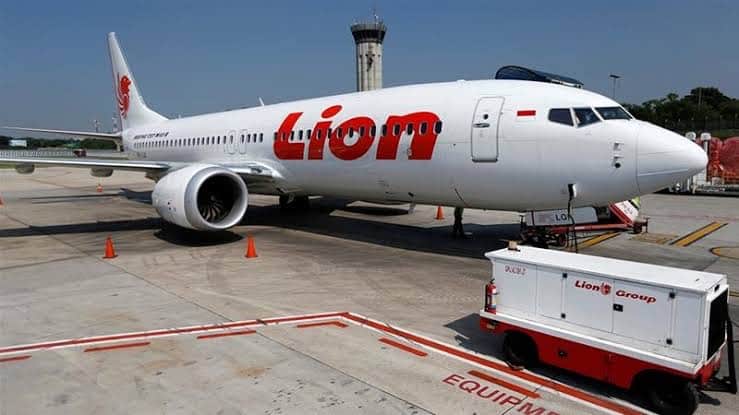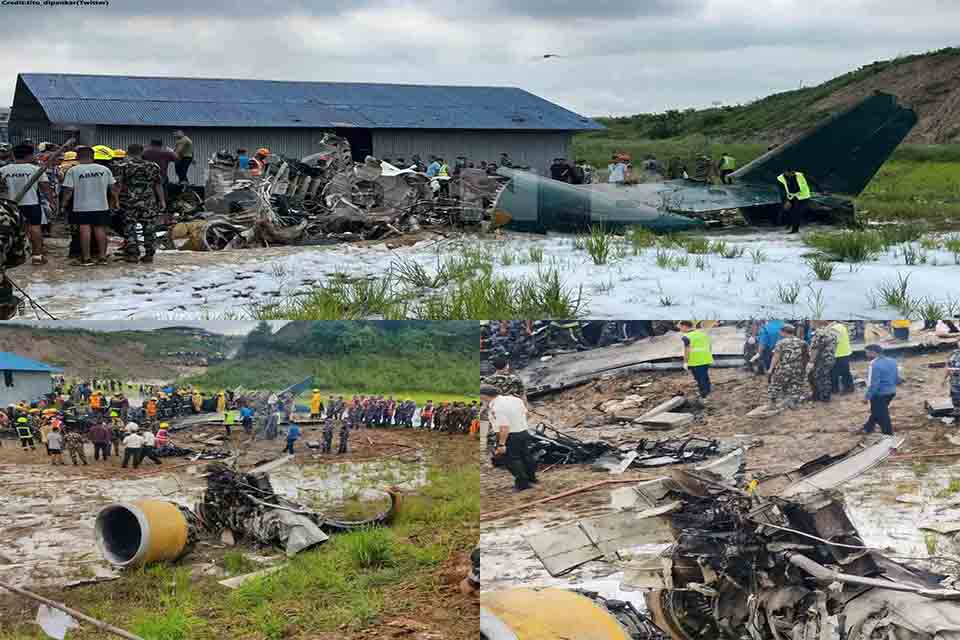Latest News.
Boeing Statement On Lion Air Flight 610 Investigation Final Report

CHICAGO, Oct. 25, 2019 /PRNewswire/ — Boeing (NYSE: BA) issued the following statement regarding the release today of the final investigation report of Lion Air Flight 610 by Indonesia’s National Transportation Safety Committee (KNKT):
“On behalf of everyone at Boeing, I want to convey our heartfelt condolences to the families and loved ones of those who lost their lives in these accidents. We mourn with Lion Air, and we would like to express our deepest sympathies to the Lion Air family,” said Boeing President & CEO Dennis Muilenburg. “These tragic events have deeply affected us all and we will always remember what happened.”
“We commend Indonesia’s National Transportation Safety Committee for its extensive efforts to determine the facts of this accident, the contributing factors to its cause and recommendations aimed toward our common goal that this never happens again.”
Aircraft Lessor Griffin Global Asset Management Orders Five Boeing 737-8 Jets
“We are addressing the KNKT’s safety recommendations, and taking actions to enhance the safety of the 737 MAX to prevent the flight control conditions that occurred in this accident from ever happening again. Safety is an enduring value for everyone at Boeing and the safety of the flying public, our customers, and the crews aboard our airplanes is always our top priority. We value our long-standing partnership with Lion Air and we look forward to continuing to work together in the future.”
Boeing experts, working as technical advisors to the U.S. National Transportation Safety Board, have supported the KNKT over the course of the investigation. The company’s engineers have been working with the US Federal Aviation Administration (FAA) and other global regulators to make software updates and other changes, taking into account the information from the KNKT’s investigation.
Boeing evaluating the production rate of B737 max to 31 per month by end of 2022.
Since this accident, the 737 MAX and its software are undergoing an unprecedented level of global regulatory oversight, testing and analysis. This includes hundreds of simulator sessions and test flights, regulatory analysis of thousands of documents, reviews by regulators and independent experts and extensive certification requirements.
Over the past several months Boeing has been making changes to the 737 MAX. Most significantly, Boeing has redesigned the way Angle of Attack (AoA) sensors work with a feature of the flight control software known as Maneuvering Characteristics Augmentation System (MCAS). Going forward, MCAS will compare information from both AoA sensors before activating, adding a new layer of protection.
These are the changes made to the new Boeing 737 Max, which make it safer.
In addition, MCAS will now only turn on if both AoA sensors agree, will only activate once in response to erroneous AOA, and will always be subject to a maximum limit that can be overridden with the control column.
These software changes will prevent the flight control conditions that occurred in this accident from ever happening again.
Thales and Diehl join Airbus to develop flight control computers for CityAirbus NextGen
In addition, Boeing is updating crew manuals and pilot training, designed to ensure every pilot has all of the information they need to fly the 737 MAX safely.
Boeing continues to work with the FAA and other regulatory agencies worldwide on the certification of the software update and training program to safely return the 737 MAX to service.

Aviation
Nepal Plane Crash: 18 Dead as Aircraft Crashes During Takeoff pilot survives

On July 24, 2024, a tragic accident unfolded at Tribhuvan International Airport in Kathmandu when a Saurya Airlines aircraft crashed during takeoff.
The incident occurred around 11:00 AM local time as the flight, bound for Pokhara, was preparing for departure. The aircraft, carrying 19 individuals including the aircrew, crashed shortly after lifting off the runway. According to PTI, “at least 18 people were killed” in the accident.
The casualties included 18 Nepalis and one Yemeni citizen, all of whom were employees of Saurya Airlines, as confirmed by police. The aircraft was en route for technical maintenance at the time of the crash.
This led in the crash of Yeti Airlines Flight 691, which killed 72 lives:Click here
Images released by Nepal police showed thick smoke pouring from the burning wreckage on the runway. Eyewitnesses, as reported by The Kathmandu Post, described how the plane flipped after its wing-tip struck the ground during takeoff.
The impact led to an immediate fire, and the aircraft subsequently plunged into a gorge on the eastern side of the runway. Rescue operations commenced swiftly, with police and firefighters arriving at the scene to control the situation.
The aviation authority confirmed that rescue efforts were initiated immediately, but the crash underscores the persistent dangers associated with air travel in Nepal. The country’s challenging mountainous terrain often contributes to aviation risks.
Man Falls From Airplane Door In Indonesia After Staff Pull Back Stairs:Click here
The pilot of the aircraft survived the crash and was transported to Kathmandu Medical College Hospital for treatment, as reported by a doctor at the hospital who was not authorized to speak to the media.
In response to the incident, Tribhuvan International Airport, the primary hub for both international and domestic flights in Nepal, was closed as emergency crews worked at the site.
-

 Travel1 week ago
Travel1 week agoAir India to Expand US Operations with Three New Routes After a Decade
-

 Travel2 weeks ago
Travel2 weeks agoWhy We Should Avoid These Stamps in a Passport
-

 Airlines1 month ago
Airlines1 month agoInvestigations Reveal Fake Chinese Titanium in Boeing and Airbus Jets
-

 Tech4 weeks ago
Tech4 weeks agoChina’s CATL Plans 1,800-Mile Electric Plane Launch by 2027
-

 Airport3 days ago
Airport3 days agoTop 10 Largest Airports in the World by Size
-

 Aerospace4 weeks ago
Aerospace4 weeks agoChina’s Fighter Jets Turn Wings into Autonomous Drones
-

 Airlines4 days ago
Airlines4 days agoAir India Rolls Out A350s for Delhi-New York JFK and Newark Routes
-

 Defence3 weeks ago
Defence3 weeks agoBoeing Enhances Chinook with New Engines and Block II Upgrades at $96 Million







